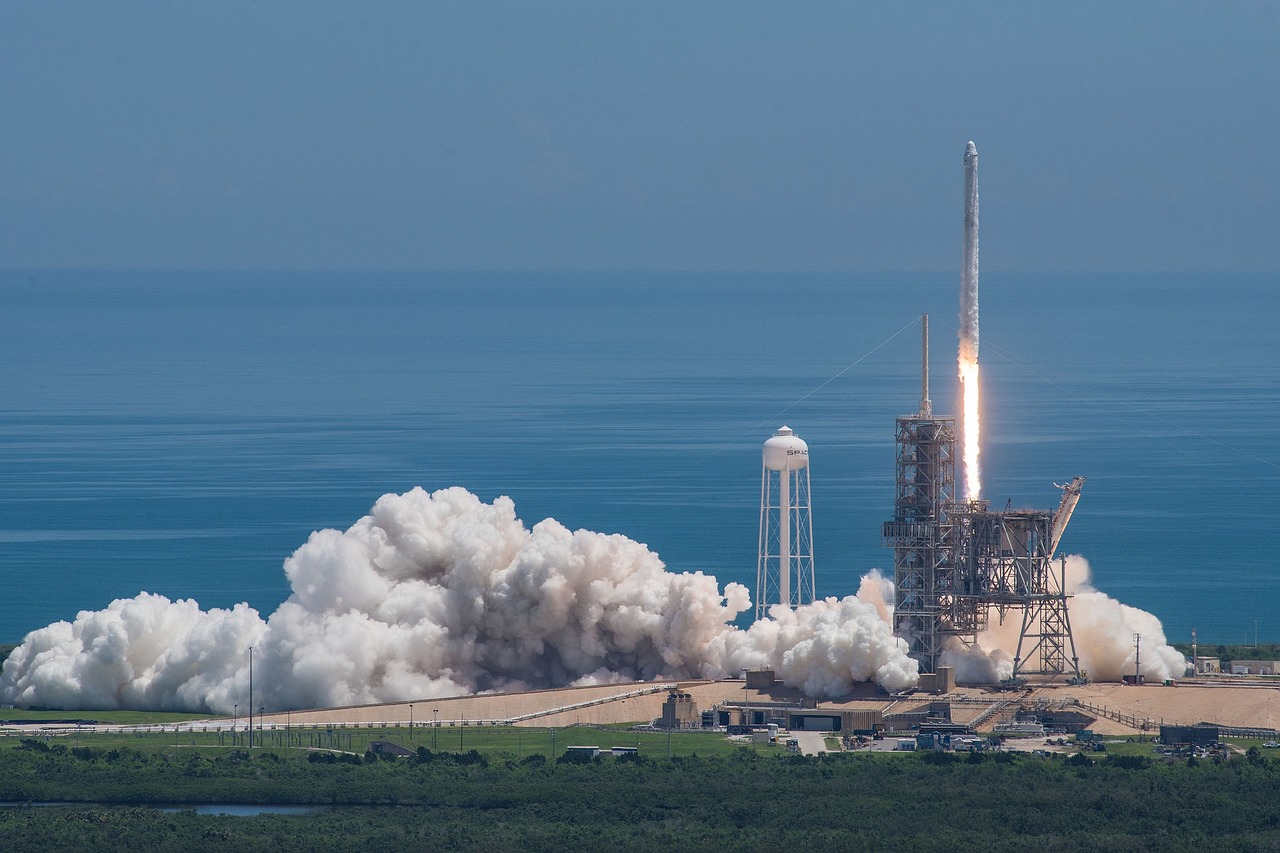
Vocabulary:
I will read the words, meanings, and sample sentences. Then, repeat after me.
- splashdown /SPLASH-doun/
- gulf /GUHLF/
- contract /kuhn-TRAKT/
- fleet /fleet/
- colonization /kaa-luh-nai-ZAY-shn/
[noun] – the landing of a spacecraft in the sea
The astronauts cheered when their capsule made a successful splashdown in the ocean.
[noun] – a large area of sea partially enclosed by land
The gulf between the two countries has many fish and coral reefs.
[verb] – to make a legal agreement with someone to do something
They plan to contract a company to handle the event’s catering.
[noun] – group of ships or vehicles
The fleet of fishing boats returned to the harbor at sunset.
[noun] – the act of establishing control over and settling among a new group of people
The colonization of Mars is a long-term goal for many space agencies.
Article reading:
Please read the whole article. Then, I will check your pronunciation and intonation.
SpaceX successfully completed the first full test flight of its Starship rocket, marking a significant milestone in space exploration. The nearly 400-foot-tall rocket launched from Texas and returned to Earth without exploding, a remarkable improvement from previous attempts that ended in explosions. This flight, the fourth for the Starship, was the most successful to date, demonstrating substantial advancements in SpaceX’s technology. The rocket and spacecraft achieved a controlled splashdown in the ocean, making it the longest flight yet. Elon Musk, CEO of SpaceX, noted the successful soft landing, despite some damage to the rocket.
During the flight, the first-stage booster separated and landed in the Gulf of Mexico as planned. The spacecraft reached an altitude of nearly 130 miles and a speed of over 16,000 mph before descending. Some parts of the spacecraft broke away during reentry, but it continued transmitting data until it reached its targeted splashdown site. This test was a critical step toward SpaceX’s goal of reusing the rocket for missions to the moon and Mars. SpaceX had implemented software upgrades and rocket adjustments to improve the chances of success. The Federal Aviation Administration approved the test, ensuring all safety requirements were met. Starship is designed for full reusability with controlled landings planned. While no parts were recovered on this flight, it marked progress towards this goal. NASA has contracted SpaceX for moon missions, with Starship crucial for lunar operations. SpaceX also aims to offer moon tourist trips, despite the first private customer withdrawing due to delays. Elon Musk envisions fleets of Starships supporting human colonization of Mars, reflecting SpaceX’s ambitious space travel vision.
During the flight, the first-stage booster separated and landed in the Gulf of Mexico as planned. The spacecraft reached an altitude of nearly 130 miles and a speed of over 16,000 mph before descending. Some parts of the spacecraft broke away during reentry, but it continued transmitting data until it reached its targeted splashdown site. This test was a critical step toward SpaceX’s goal of reusing the rocket for missions to the moon and Mars. SpaceX had implemented software upgrades and rocket adjustments to improve the chances of success. The Federal Aviation Administration approved the test, ensuring all safety requirements were met. Starship is designed for full reusability with controlled landings planned. While no parts were recovered on this flight, it marked progress towards this goal. NASA has contracted SpaceX for moon missions, with Starship crucial for lunar operations. SpaceX also aims to offer moon tourist trips, despite the first private customer withdrawing due to delays. Elon Musk envisions fleets of Starships supporting human colonization of Mars, reflecting SpaceX’s ambitious space travel vision.
Discussion Questions:
I will read each question. Then, please answer them.
- Have you ever watched a rocket launch, either in person or on TV? If so, how did you feel during the launch? If not, would you like to experience it? Why or why not?
- Have you ever visited a space museum or a planetarium? If so, what did you find most interesting? If not, what would you like to learn about space?
- Do you agree that successful splashdowns are crucial for the future of reusable rockets?
- What are the potential benefits and drawbacks of space colonization for humanity?
- What are the potential benefits and drawbacks of space colonization for humanity?
Summarization
Please summarize the whole article using your own words and expressions. You will have one minute to prepare before you answer.
Describe:
Please explain the definition of each word listed below based on your understanding. You can provide example sentences if needed.
- milestone
- attempt
- landing
- software
- delay